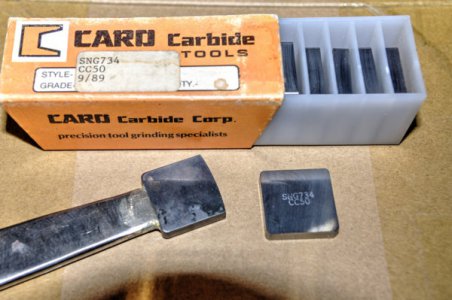- Joined
- Jul 2, 2014
- Messages
- 7,594
All you need is a piece of micrograin carbide, say perhaps 1" wide, 3/8 to 1/2" long, and 2mm, 3/32", or even 1/8" (3mm) thick, C2 grade seems to hold up well and chips less. Different sizes and tip radii work with different types of work and also depend on user preference. Blanks are available from places like MSC, and purpose made Sandvik Coromant scraper blades are available on eBay, though the prices have really increased (just looked, !!!) in the last few years. Great deals are still out there, though, with some searching. It is not rocket science, but some guidelines should be followed to have a good initial experience... PM me if you want help in deciding on equipment. I am a rookie as well, but I do understand what works...


